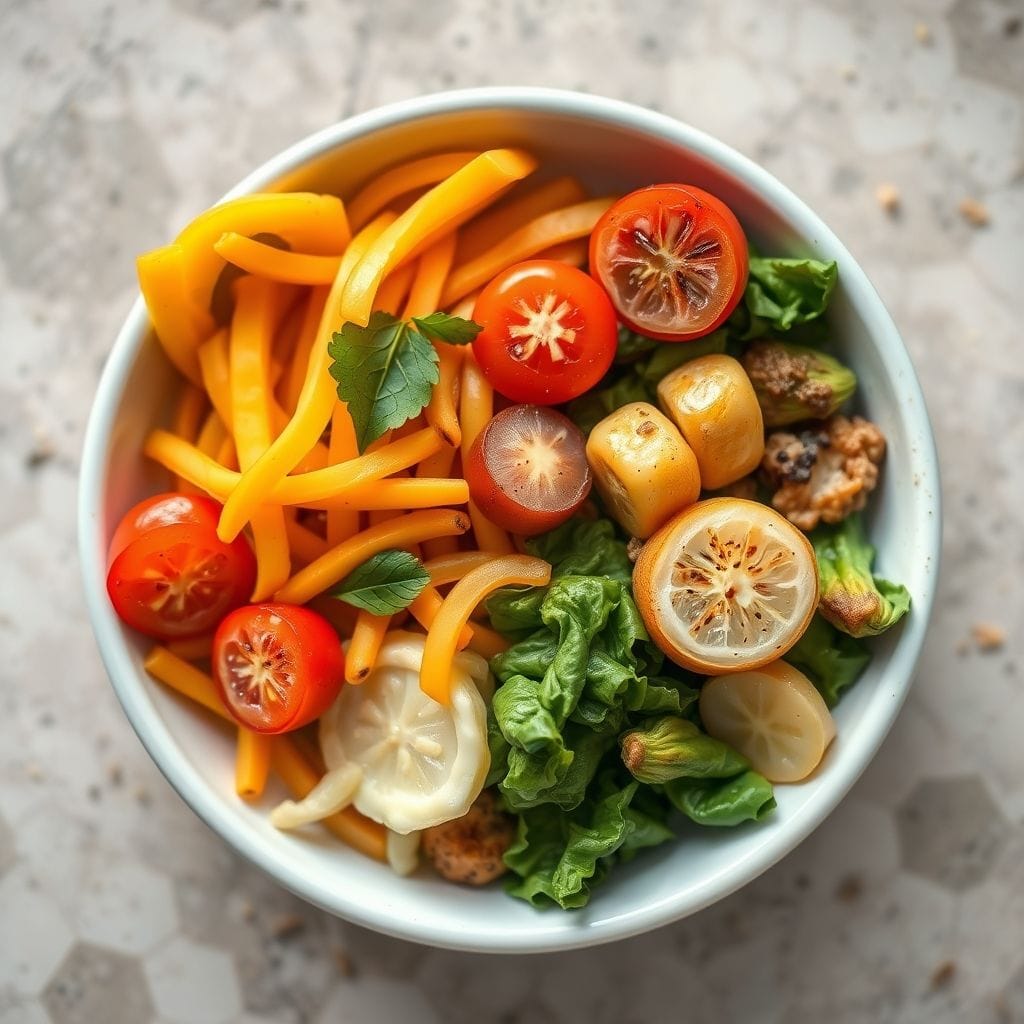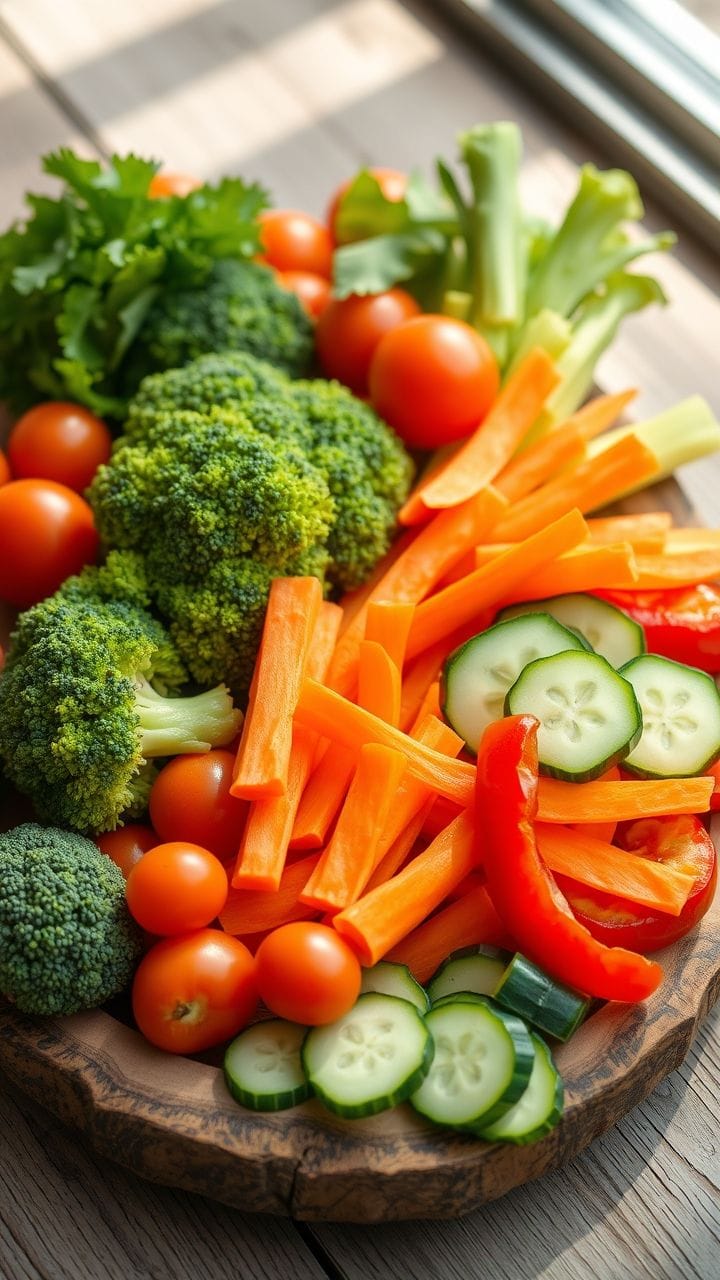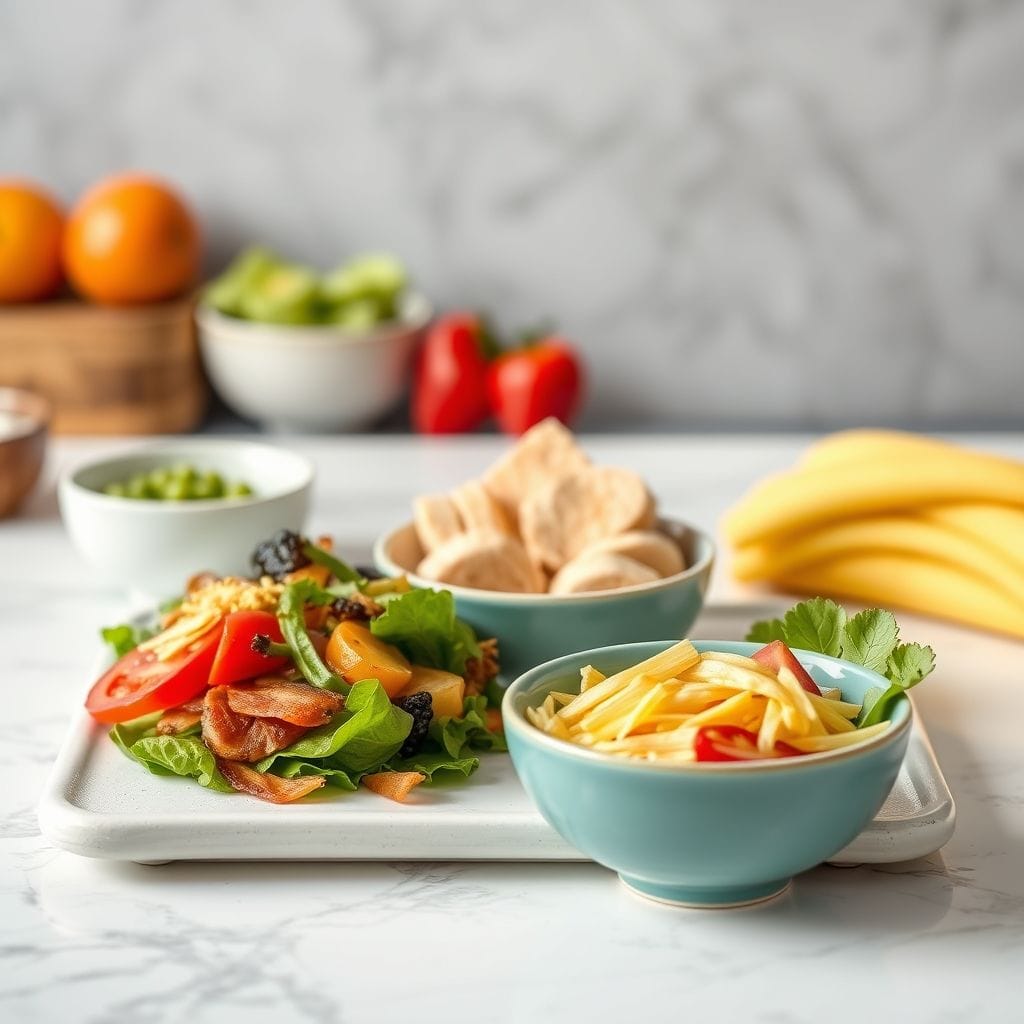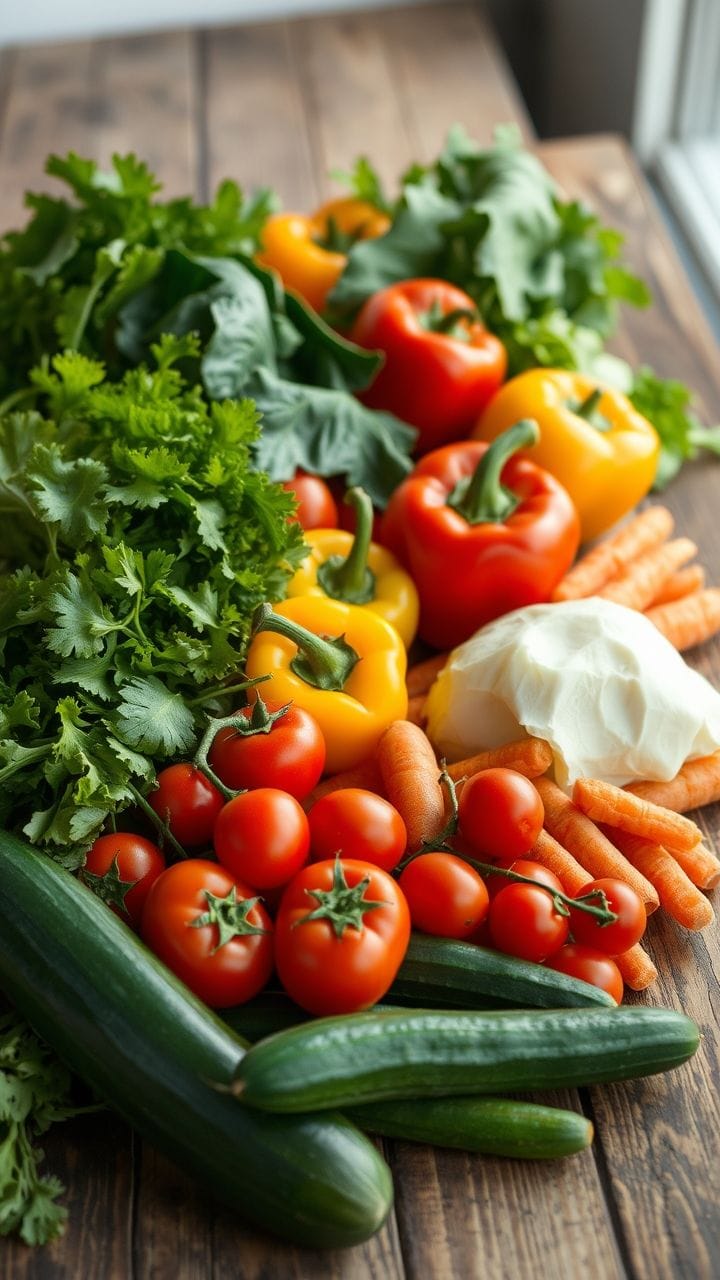Master Healthy Meal Planning Easily

Are weeknights a chaotic scramble to figure out dinner? Do your grocery bills feel inflated, and your healthy eating goals constantly derailed? You're not alone. Many people struggle with inconsistent eating habits, food waste, and stress around meals. The secret weapon against this culinary chaos isn't a fancy gadget or a complicated diet book; it's effective meal planning. Planning your meals ahead of time might sound tedious, but it's a powerful tool that saves you time, money, and mental energy, all while paving the way for healthier eating. It transforms the question 'What's for dinner?' from a source of anxiety into a simple check of the plan.
Healthy meal planning isn't about rigid rules or restrictive diets; it's about making conscious choices that support your well-being. It helps you incorporate more nutrient-dense foods, manage portions, and avoid impulsive, less healthy options. By taking a little time upfront, you set yourself up for success throughout the week. This article will guide you through the essential steps to build a meal planning routine that works for your lifestyle, from assessing your current habits to prepping like a pro. Get ready to take control of your kitchen and nourish your body efficiently.
Assess Your Current Eating Habits and Lifestyle
Before you can plan effectively, you need to understand where you're starting from. Take a moment to honestly assess your current eating patterns. What meals do you typically eat? When do you eat them? What are your biggest challenges – lack of time, inspiration, cooking skills, or budget? Consider your lifestyle: What do your weekdays and weekends look like? Are you working late, hitting the gym, or shuttling kids to activities? How many people are you usually cooking for? Do you have any dietary restrictions, allergies, or preferences?

Keeping a food journal for a few days can be incredibly insightful. Note everything you eat, when you eat it, and how you feel afterward. This can reveal patterns you weren't aware of, such as skipping breakfast, relying heavily on convenience foods, or frequent snacking. Understanding your current reality is the foundation upon which you'll build a sustainable plan. For instance, if you know Thursdays are always crazy busy, you can plan for a quick, pre-prepared meal on that day. If you find you always grab fast food for lunch because you don't pack one, that highlights a key area for planning focus.
Think about your energy levels and motivation throughout the week. Are you more likely to cook elaborate meals on weekends? Save simpler, quicker recipes for Mondays? Aligning your meal plan with your weekly energy flow and schedule is crucial for adherence. Don't try to force a plan that doesn't fit your life; adapt the plan to fit you.
Set Clear, Achievable Health and Planning Goals
What do you hope to achieve with meal planning? Be specific. Do you want to lose weight, save money, eat more vegetables, reduce food waste, or simply feel less stressed about meals? Having clear goals provides direction and motivation. Instead of a vague goal like 'eat healthier,' try 'eat at least 5 servings of vegetables daily' or 'cook dinner at home 5 nights a week.'
Consider both dietary goals and practical planning goals. Dietarily, you might aim to incorporate more lean protein, increase fiber intake, reduce processed foods, or try new healthy recipes. Practically, you might aim to spend no more than 30 minutes cooking on weeknights, keep grocery spending under a certain amount, or prepare all lunches for the week on Sunday. Write these goals down. Make them SMART: Specific, Measurable, Achievable, Relevant, and Time-bound.

Your goals should be realistic based on your assessment in the previous step. If you currently cook zero meals at home, aiming for seven might be overwhelming. Start with a more achievable goal, like cooking three nights a week, and gradually increase. Celebrate small wins! As you achieve your initial goals, you can set new ones. This iterative process makes meal planning feel less like a chore and more like a manageable habit.
Remember that goals can evolve. As your lifestyle or health needs change, revisit and adjust your meal planning goals accordingly. The key is to create a sustainable system that supports your long-term well-being.
Structure Your Weekly Meal Plan
Now it's time to put pen to paper, or fingers to keyboard, and create the actual plan. Decide on a planning schedule – weekly is common, but bi-weekly might work for you. Choose a day and time to do your planning (e.g., Sunday afternoon). Look at your week ahead: note any busy nights, social engagements, or days you know you'll eat out. This forms the basic structure.

Start filling in meals. Don't feel pressured to plan every single snack and meal initially. Focus on the meals that are most challenging or important to your goals, often dinners and lunches. Plan around your schedule: quick meals for busy nights, maybe a slightly more involved recipe for a less hectic evening. Think about using leftovers – planning for leftovers can save significant time and reduce food waste. For example, if you roast a chicken on Sunday, plan for chicken salads or tacos on Monday.
Many meal planning experts recommend starting small, perhaps planning just dinners for the week, or dinners and lunches, before attempting to plan every meal and snack. This phased approach can prevent burnout.
Consider theme nights to simplify decision-making: Meatless Monday, Taco Tuesday, Stir-fry Friday, etc. This adds structure and variety without requiring you to reinvent the wheel each week. As you select recipes, check your pantry and fridge to see what ingredients you already have. This helps reduce your grocery list and ensures you use up existing food before it spoils. Build your plan around sales flyers or seasonal produce if budget and freshness are priorities. Use a template, a planner app, or even a simple spreadsheet – whatever method works best for you to visualize and stick to your plan.
Build a Healthy Recipe Repertoire
A diverse collection of healthy recipes is the engine of a successful meal plan. Relying on just a few dishes can lead to boredom and make it harder to stick to your plan. Start building a go-to list of healthy meals that you enjoy and are relatively easy to prepare. Categorize them by meal type (breakfast, lunch, dinner), main ingredient (chicken, fish, vegetarian), or preparation time (under 30 minutes, weekend project).

Look for recipes from reputable sources like registered dietitians, health organizations, or well-known healthy food blogs and cookbooks. Pay attention to ingredients, cooking methods (baking, steaming, grilling are often healthier than frying), and nutritional information if available. Don't be afraid to modify recipes to make them healthier or fit your preferences – swap white rice for brown rice, add extra vegetables, reduce salt or sugar.
Experiment with new recipes regularly to keep things interesting, but balance new dishes with familiar favorites to avoid feeling overwhelmed. Keep track of recipes you try – note what you liked, what you'd change, and whether you'd make it again. Create a system for organizing your recipes, whether it's a Pinterest board, a binder, or a digital recipe manager app. Having your favorite healthy recipes easily accessible makes the planning process much smoother and ensures you're consistently incorporating nutritious meals into your week.
Create Your Grocery Shopping List

Once your meal plan is complete, the next crucial step is creating a detailed grocery list. This list is your roadmap for shopping efficiently, preventing impulse buys of less healthy items, and ensuring you have everything you need to execute your plan. Go through each planned meal and list all the necessary ingredients. Be specific – note quantities if required (e.g., '2 chicken breasts,' '1 head broccoli').
Organize your list by store section (produce, dairy, pantry, meat, frozen foods, etc.). This saves time in the store and helps you navigate efficiently. Before heading out, do a quick check of your pantry, fridge, and freezer to ensure you haven't missed anything you already have or listed something you don't need. This prevents accidental double-purchases and reduces food waste.
According to consumer reports and budgeting experts, shopping from a list is one of the most effective ways to save money on groceries and avoid purchasing unhealthy impulse items often placed near checkout aisles.
Stick to your list as much as possible. The grocery store is designed to tempt you with unplanned purchases. Shopping when you're not hungry can also help curb impulse buys. Consider trying online grocery ordering or pickup services, which can be excellent tools for sticking strictly to your list and saving time. A well-prepared grocery list is the bridge between your meal plan and healthy meals on the table, ensuring you have the right ingredients at the right time.
Implement Meal Prep Strategies
Meal prepping is where your planning comes to life and saves you significant time during the busy week. Dedicated some time, usually on a less busy day like Sunday, to prepare components of your planned meals. This doesn't mean cooking every meal entirely, but rather doing tasks that will streamline weeknight cooking.
Common meal prep activities include chopping vegetables (onions, peppers, carrots, broccoli florets), cooking grains (quinoa, brown rice), preparing proteins (grilling chicken, cooking ground meat, boiling eggs), washing and portioning fruits and greens for snacks or salads, and making sauces or dressings. You can store these prepped ingredients in airtight containers in the fridge, ready to be quickly assembled into meals.
Consider prepping entire meals if that fits your lifestyle. This is particularly popular for lunches, where you can portion out salads, grain bowls, or leftovers into individual containers for grab-and-go convenience. For dinners, focus on prepping components that take the most time, like chopping or cooking base grains/proteins. The goal is to reduce the amount of active cooking and preparation needed during busy hours. Experiment with different prep strategies to find what works best for you and your meal plan. Even simple tasks like washing lettuce or chopping onions can make a big difference on a busy Tuesday night.
Stay Flexible and Adapt Your Plan
While planning is essential, rigidity can be the enemy of sustainability. Life happens – unexpected events, changes in schedule, or simply not feeling like eating what you planned. It's important to build flexibility into your meal planning process. Don't view your plan as a strict mandate, but rather a helpful guide. If you need to swap meals between days, that's perfectly fine. If a last-minute invitation comes up, adjust your plan for that day and perhaps save the planned meal for later in the week or freeze components for another time.

Have a few 'backup meals' or 'pantry meals' in mind – quick, easy dishes you can make with staple ingredients you usually have on hand (like pasta with canned tomatoes and beans, or omelets). These are lifesavers when your original plan goes awry. Get comfortable with swapping ingredients based on what you have or what looks good at the store. If a recipe calls for broccoli but cauliflower is on sale, make the easy substitution.
Dietary research often emphasizes the importance of flexibility and mindful eating over strict adherence to rigid plans, promoting a healthier long-term relationship with food.
Regularly review your plan at the end of the week. What worked well? What didn't? Were the portion sizes right? Did you waste any food? Did you stick to the plan? Use this reflection to inform your planning for the following week. Meal planning is a skill that improves with practice. Be patient with yourself, learn from challenges, and adapt your approach as needed. The goal is progress, not perfection. A flexible plan is one you're more likely to stick with in the long run.
Conclusion
Embarking on the journey of healthy meal planning is a significant step towards a more organized, economical, and nutritious lifestyle. We've explored how assessing your current habits provides a crucial starting point, allowing you to set realistic and achievable goals that align with your health aspirations. Structuring your week, building a diverse recipe repertoire, and creating a detailed grocery list are the practical steps that transform aspiration into action. Finally, implementing meal prep strategies and maintaining flexibility ensure that your plan is not only effective but also sustainable and adaptable to the inevitable unpredictability of life.
Meal planning is more than just deciding what to eat; it's an investment in your health, your time, and your wallet. It reduces stress, minimizes food waste, and empowers you to make healthier choices consistently. It might take a few weeks to find your rhythm, to figure out the planning method, prep style, and recipe rotation that best suits you. Don't get discouraged by bumps in the road; treat them as learning opportunities. Start small, stay consistent, and celebrate your progress.

By taking control of your meals, you gain control over your nutrition and free up mental space for other important things in your life. Make healthy meal planning a regular practice, and you'll soon discover the profound positive impact it has on your overall well-being. Happy planning!



